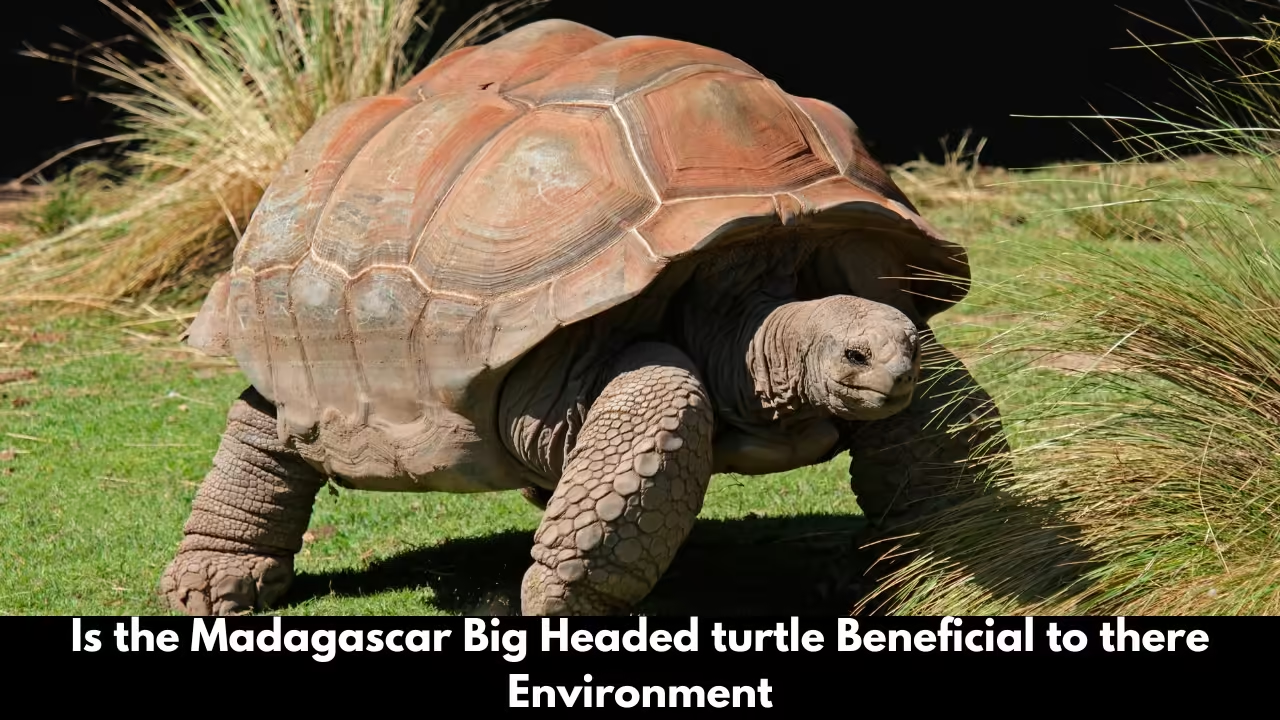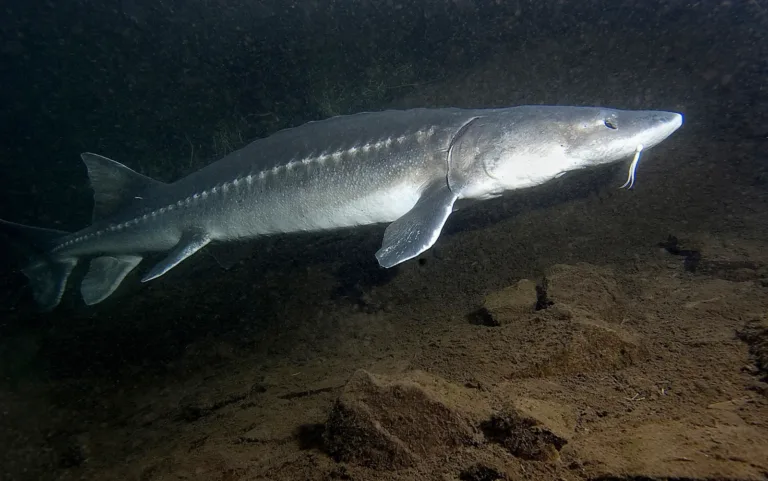Is the Madagascar Big Headed turtle Beneficial to there Environment

How the Madagascar Big-Headed Turtle Benefits Its Ecosystem- Is the madagascar big headed turtle beneficial to there environment
1. Biodiversity Contribution in the Food Chain
The Madagascar Big-Headed Turtle is an integral part of its habitat’s biodiversity. As an omnivore, it consumes a variety of foods, including aquatic plants, small fish, and insects. This dietary diversity helps maintain the balance within the ecosystem. By consuming different species, the turtle prevents any one species from becoming too dominant, which could otherwise lead to an imbalance in the environment.
For instance, the turtle’s consumption of aquatic plants helps regulate plant growth. Without this natural control, certain plant species might overgrow, leading to a decrease in oxygen levels in the water. This reduction in oxygen can be detrimental to other aquatic organisms, which rely on a balanced environment to thrive.
2. Food Web Dynamics
In the intricate food web of Madagascar’s wetlands, the Madagascar Big-Headed Turtle plays a dual role as both predator and prey. As a consumer of aquatic plants and small creatures, it helps regulate the populations of these organisms. This regulation is crucial for maintaining a balanced and healthy ecosystem.
By eating invertebrates and small fish, the turtle helps keep these populations in check, preventing overpopulation that could lead to the depletion of resources and a decline in water quality. Additionally, the turtle’s feeding habits contribute to the overall health of the aquatic environment by preventing the unchecked growth of plants, which could otherwise cause the water to become murky and less hospitable to other life forms.
3. Vegetation Control
The Madagascar Big-Headed Turtle also acts as a natural gardener for its aquatic habitat. By feeding on various water plants, including algae, the turtle helps prevent the excessive growth of vegetation. This is crucial for maintaining water quality and ensuring that other aquatic species have a suitable environment to live in.
Without these turtles, aquatic plants could proliferate unchecked, leading to what is known as eutrophication. Eutrophication is a process where excess nutrients in the water lead to dense plant growth, which can severely reduce oxygen levels and harm aquatic life. The Madagascar Big-Headed Turtle’s role in controlling plant growth helps prevent such negative consequences.
4. Stirring Up the Riverbed Deposits
The Madagascar Big-Headed Turtle also plays a role in maintaining the health of its habitat by stirring up sediment in riverbeds and lake bottoms. This activity has several benefits:
- Oxygenation of Sediment Layers: By disturbing the sediment, the turtle helps oxygen reach deeper layers of soil, which is vital for the health of beneficial bacteria that aid in nutrient recycling.
- Creation of Habitats: The turtle’s actions create small homes or hideaways for smaller aquatic creatures, promoting a diverse and vibrant ecosystem.
- Nutrient Recycling: The mixing of sediment helps in the recycling of nutrients, contributing to a balanced and thriving aquatic environment.
5. Indicator Species for Ecosystem Health
The Madagascar Big-Headed Turtle serves as an indicator species for the health of freshwater ecosystems. Its presence and population health can provide valuable insights into the quality of the wetlands and rivers where it resides. A healthy population of these turtles generally indicates a well-functioning ecosystem with good water quality and minimal pollution.
Conversely, a decline in the turtle population can signal underlying environmental issues such as water pollution, habitat destruction, or imbalances in nutrient levels. Monitoring the health of Madagascar Big-Headed Turtles helps conservationists identify and address these problems early, contributing to the overall health of the ecosystem. Is the madagascar big headed turtle beneficial to there environment, You will get complete knowledge about this topic in this article.

Expert Opinions on the Madagascar Big-Headed Turtle’s Ecological Role
Dr. Laura Thompson, Ecologist at the University of Madagascar
“From an ecological perspective, the Madagascar Big-Headed Turtle is an essential component of its habitat. Its role in controlling plant growth and maintaining sediment health cannot be overstated. These turtles help balance the aquatic environment, ensuring that all species can thrive. Without them, we could see significant disruptions in the ecosystem.”
Dr. Mark Henderson, Conservation Biologist with the Durrell Wildlife Conservation Trust
“The Madagascar Big-Headed Turtle is more than just a species in danger; it’s a keystone species in its habitat. Conservation efforts aimed at protecting these turtles are crucial not only for their survival but for the overall stability of their environment. By safeguarding their populations, we’re also preserving the intricate web of life that depends on them.”

Conservation Efforts and Success Stories- Is the madagascar big headed turtle beneficial to there environment.
Current Conservation Initiatives
The Madagascar Big-Headed Turtle faces numerous threats, including habitat destruction, poaching, and illegal trade. Several organizations, including the Turtle Conservation Fund (TCF) and the Durrell Wildlife Conservation Trust, are working to address these challenges.
- Breeding and Reintroduction Programs: Conservationists are breeding turtles in captivity and reintroducing them into their natural habitats. These efforts help bolster wild populations and improve the genetic diversity of the species.
- Habitat Protection: Protecting and restoring the wetlands and rivers where these turtles live is crucial for their survival. Conservation programs focus on preserving these habitats from further destruction and pollution.
- Education and Awareness: Raising awareness about the importance of the Madagascar Big-Headed Turtle and the threats it faces is essential. Educational programs aim to engage local communities and promote sustainable practices.
Challenges and Future Strategies
Despite these efforts, significant challenges remain. The illegal wildlife trade and habitat loss continue to threaten the survival of the Madagascar Big-Headed Turtle. Future strategies must focus on:
- Enhanced Protection Measures: Strengthening laws against illegal trade and improving enforcement are vital to combatting poaching and habitat destruction.
- Community Involvement: Engaging local communities in conservation efforts and highlighting the economic and cultural benefits of preserving the turtles can foster a sense of responsibility and support for conservation initiatives.
- Global Collaboration: Conservation efforts must involve international cooperation to address the broader issues affecting turtle populations, including climate change and global trade practices.

The Benefits of the Madagascar Big-Headed Turtle to Local Communities
Ecotourism Potential
The Madagascar Big-Headed Turtle holds significant potential for ecotourism. Its unique status as a critically endangered species attracts wildlife enthusiasts and photographers to Madagascar’s wetlands and rivers. This influx of tourists supports local economies by creating jobs and generating revenue for local businesses.
Cultural Significance
Beyond its ecological and economic importance, the Madagascar Big-Headed Turtle also holds cultural significance for local communities. In Malagasy culture, turtles often feature in folklore and traditional practices. This cultural connection fosters a sense of pride and responsibility towards the conservation of these turtles and their habitats.

Conclusion
Here is the conclusion for is the madagascar big headed turtle beneficial to there environment. The Madagascar Big-Headed Turtle is far more than a unique species; it is a crucial player in maintaining the health and balance of its aquatic environment. Its roles in controlling vegetation, maintaining sediment health, and indicating ecosystem health underscore its importance. Conservation efforts are essential to ensure the survival of this endangered turtle and the stability of its habitat.
By understanding and supporting the Madagascar Big-Headed Turtle, we not only contribute to the preservation of a remarkable species but also to the overall health and resilience of the ecosystems they support. As we move forward, continued collaboration and commitment to conservation will be key in ensuring that this vital species can continue to thrive in its natural habitat.

Is the madagascar big headed turtle beneficial to there environment Q&A Section:-
Q1: What is the primary diet of the Madagascar Big-Headed Turtle?
A1: The Madagascar Big-Headed Turtle is an omnivore. Its diet includes aquatic plants, small fish, and insects. This varied diet helps maintain the balance of its aquatic ecosystem.
Q2: How does the Madagascar Big-Headed Turtle impact plant growth in its habitat?
A2: The turtle helps control plant growth by feeding on aquatic plants and algae. This prevents overgrowth, which can lead to decreased oxygen levels and negatively affect other aquatic organisms.
Q3: What are the main threats to the Madagascar Big-Headed Turtle?
A3: The primary threats include habitat destruction, poaching, and illegal trade. These factors contribute to the species’ critically endangered status.
Q4: How can local communities benefit from the conservation of the Madagascar Big-Headed Turtle?
A4: Local communities can benefit through ecotourism, which creates economic opportunities, and through cultural enrichment, as the turtle holds significance in local folklore and traditions.
Q5: What conservation measures are being taken to protect the Madagascar Big-Headed Turtle?
A5: Conservation measures include breeding and reintroduction programs, habitat protection, and education and awareness campaigns. These efforts aim to address threats and support the species’ recovery.
By understanding the integral role of the Madagascar Big-Headed Turtle in its environment and supporting ongoing conservation efforts, we can help ensure a balanced and thriving ecosystem for generations to come.
You can read our Other Articles Here.







